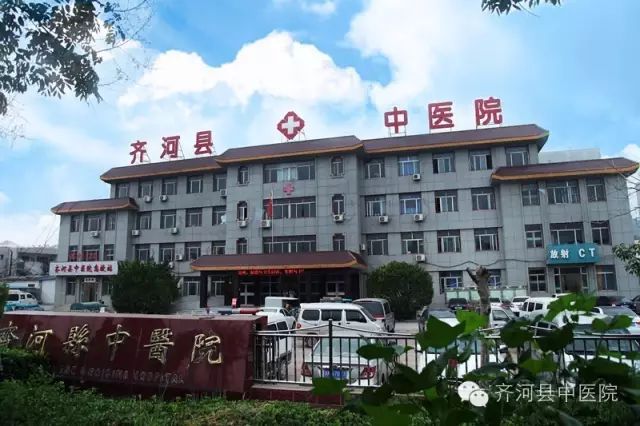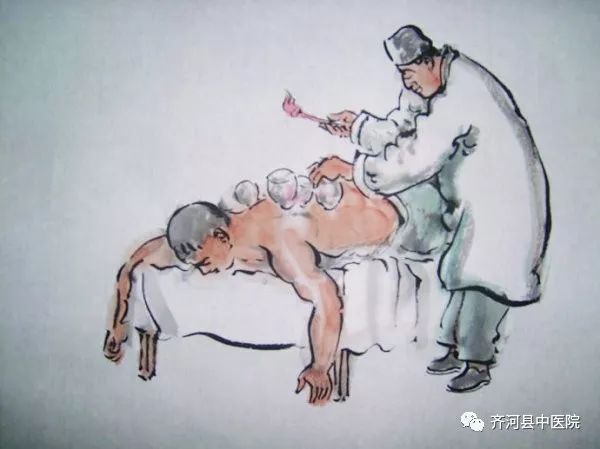
Have you seen the circular purple marks on the skin of friends and family after cupping therapy? Do you know what discomforts can be alleviated by cupping? Have you ever tried cupping yourself? Let Dr. Lu Zhenhua, Chief Physician of the Acupuncture Department at Qihe County Traditional Chinese Medicine Hospital, answer your questions.
The Historical Development of Cupping Therapy
According to Dr. Lu Zhenhua, cupping therapy has a history of over two thousand years in China. Historical records indicate that as early as the 6th century BC, physicians were already using this method to treat patients. In ancient texts, cupping therapy was referred to as “Jiao Fa” (角法), as doctors used animal horns as suction tools in ancient times.
As human society progressed, the tools for cupping gradually improved. By the Sui and Tang dynasties, bamboo cups began to replace animal horns. By the Song, Jin, and Yuan dynasties, bamboo cups had completely replaced animal horns. The name for cupping therapy also changed from “Xitong Fa” (吸筒法) to “Jiao Fa,” but at this time, the primary method of cupping was the water boiling method (the cup was boiled in hot water for about 15 minutes, then removed with tweezers, drained, and quickly placed on the desired area to create suction).
In the Qing dynasty, clay cups were introduced, and the term “fire cupping” (火罐) was officially proposed, which is the mainstream method used today. This method also shifted from focusing on the disease area to targeting acupuncture points to enhance therapeutic effects.

The Mechanism of Cupping Therapy in Sports Rehabilitation
Cupping therapy utilizes the rapid combustion of alcohol inside the cup to consume the air, creating a negative pressure state that allows the cup to adhere to the skin (usually on areas with abundant muscle). This produces two effects: first, the soft muscle is drawn into the cup by the strong negative pressure (the larger the cup, the more muscle is drawn in, which stretches the muscle fibers in that area). This stretching occurs within a safe range and does not cause muscle strain, thus relaxing the muscles and alleviating fatigue; second, the strong negative pressure attracts blood from surrounding tissues to the center of the cupping area, increasing blood flow to that region. This increase in blood flow is precisely guided by the physician, ensuring that blood only flows to the cupping area, supplying the most needed locations with more nutrients and oxygen, improving the nutritional status of local tissues. After cupping, the accumulated blood quickly disperses back through the veins to the lungs and heart, carrying away metabolic waste such as lactic acid, thus promoting local blood circulation and accelerating metabolism, which is crucial for tissue repair.

Research also indicates that cupping can increase the body’s pain threshold, enhancing the pain tolerance of athletes, thereby alleviating discomfort during competitions.
Common Misconceptions About Cupping Among the Public
Dr. Lu Zhenhua, who actively works in outpatient care, interacts daily with patients who prefer traditional Chinese medicine. He has observed many misconceptions among the public regarding cupping therapy:
1. Since cupping has so many benefits, can anyone use it for health maintenance?
The answer is clearly no. Clinically, individuals with bleeding disorders, edema, or skin lesions are not suitable for cupping. Those who are excessively thin may also not benefit from cupping, as thin muscles may prevent the cup from adhering properly. Additionally, areas with large blood vessels or scars are also unsuitable for cupping.
2. Is longer cupping time always better?
This belief is a misconception. It is often seen that some individuals develop blisters at the cupping site, and they mistakenly believe this indicates the expulsion of “dampness,” enjoying the experience. In reality, this is a result of prolonged cupping causing separation between the epidermis and dermis, which is not advisable, especially in summer, as ruptured blisters can easily lead to infection.
3. Is the presence of purple marks after cupping a good sign?
This is also a misconception. As mentioned earlier, the negative pressure during cupping rapidly increases blood flow to the area, causing the blood vessels to dilate quickly. This dilation often affects small capillaries, which may be more fragile in older individuals or those who lack exercise. Consequently, rapid blood influx can lead to some capillaries rupturing, resulting in subcutaneous bleeding, which is the true cause of purple marks.
Therefore, whether or not purple marks appear should be left to chance; if they do appear, it is not a concern, and there is no need to pursue their appearance. These marks typically fade within about a week.

Additionally, Dr. Lu Zhenhua reminds everyone to keep the room warm during cupping to avoid catching a cold, and to instruct patients not to change positions during the procedure. It is also important to monitor the patient’s condition throughout the process. Whenever possible, seek professional assistance at a hospital.
Expert Profile

Dr. Lu Zhenhua is the academic leader in the specialty of neck, shoulder, waist, and leg pain at Qihe County Traditional Chinese Medicine Hospital, a Chief Physician, and a renowned expert in traditional Chinese medicine in Shandong Province and Dezhou City. He is a member of the third council of the Shandong Acupuncture Society, a member of the first Pain Professional Committee of the Shandong Traditional Chinese Medicine Association, and a vice-chairman of the Physical Medicine and Rehabilitation Committee of the Dezhou Medical Association. He has been recognized as an advanced individual in the city’s health system and has received third-class merit. He is also a top talent in professional technology at the county level.
Dr. Lu has been dedicated to acupuncture, teaching, and research for over 30 years, with exceptional medical skills and rich clinical experience. He specializes in using acupuncture, Chinese medicine, needle-knife therapy, and laser minimally invasive treatments to address neck, shoulder, waist, and leg pain and related diseases, with accurate diagnosis and significant therapeutic effects, earning him a great reputation locally. He has published over 10 papers at the provincial level and above, authored 4 books, and holds 4 invention patents, receiving two second-class and one third-class awards for scientific achievements in Dezhou City.

Integrity, Skill, Heritage, Innovation
Long press the QR code to follow us for regular health and wellness knowledge updates.

